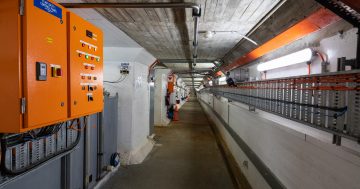In May 1912, the entrant 29 won the Federal Capital City Design Competition. This was of course Walter Burley Griffin, you’ve probably heard of him.
Design 29: Creating a Capital has collected a whole bunch of maps, paintings, and documents from the famous competition, including some pieces that have apparently not been displayed since the original exhibition of the winners.
From the website:
For the first time in 10 years, original and rarely seen designs and documents from the 1911–12 Federal Capital Design Competition are on show at the National Archives of Australia in Canberra.
Through augmented reality technology explore real places and events – then and now. Experience being immersed in these designs and in Canberra’s natural and built landscapes. Select a range of film, audio, photographic and documentary collections via innovative multimedia.
See Walter Burley Griffin and Marion Mahony Griffin’s winning original designs and original entries by the other three finalists. This is a rare opportunity to see Marion Mahony Griffin’s internationally acclaimed watercolour renderings and fine drawings up close.
Intriguing documents also reveal the people, politics, and controversy surrounding the design of the national capital up until 1920.
I was invited to explore the gallery this morning and while I did find the content of the gallery somewhat interesting, the real star of the show is how they’ve presented that content. It might be the tech-geek in me, but I was much more interested in getting my hands on their iPads and checking out the augmented reality software than I was in looking at the maps. It seems I wasn’t the only one excited about the technology. The Director-General of the National Archives of Australia David Fricker welcomed the media with a small explanation about the collection, and then followed up with a rather enthusiastic speech about the high-tech experience they wanted us to have.
While other reporters started to take photos and examine their audio recording devices, I made straight for the stack of iPads and started to play. I might have been too enthusiastic. A member of staff chased after me keen to explain how the software worked. While it was a nice gesture, she need not have bothered. It was all very straight forward.
I approached one of Griffin’s maps and held up the iPad. For a moment I simply saw the map on the wall while the software scanned the picture. A second later I was greeted with a small image of the map, along with several icons. One poke of my finger and I’m flipping through a letter from Griffin to the minister of home affairs, another couple of presses and I’m listening to a voice recording discussing the landscape of Canberra. I kept playing, finding a series of photos, some of Canberra, others of the Griffins working on their designs. I go back to the map and hit a new button, and I’m greeted by a satellite photo of the city. I moved my finger a long a slider causing the map to fade away, leaving only the outlines of Canberra’s roads and buildings. Taking a step back I looked through the iPad and aligned this outline of Canberra over the map infront of me, examining the differences and similarities between Griffin’s design and our present. I tapped on Parliament house and a photo of the building popped up. I kept pressing further and discovering more. I realised I had spent quite a lot of time standing in front of one map. I also realised I was having a lot of fun.

I continued around the exhibition testing out the software. It wasn’t perfect, sometimes it had trouble working out which image I was scanning, and sometimes the augmented reality overlays would jump around or sit in the wrong spot. However these problems were rare and most of the time it worked perfectly. There were a couple of pieces that did not have additional iPad content that weren’t clearly marked, and this caused me to waste some time waving my iPad around like an idiot before I discovered my mistake.
Talking to David Fricker about the galery he told me his main goal was to keep the technology from getting in the way. People can look at these works online, but they come to the archives to see them in person and connect with the material. The iPads are there to give people the kind of extra material that can be delivered online without separating them from the exhibits. As I virtually thumbed through the pages of a letter that was sitting behind glass in front of me. I decided he had succeeded, and that I’d love to see augmented reality become more common place in future exhibits.
Design 29 is open from the 1st of March until the 8th of September. Go and have a play.













